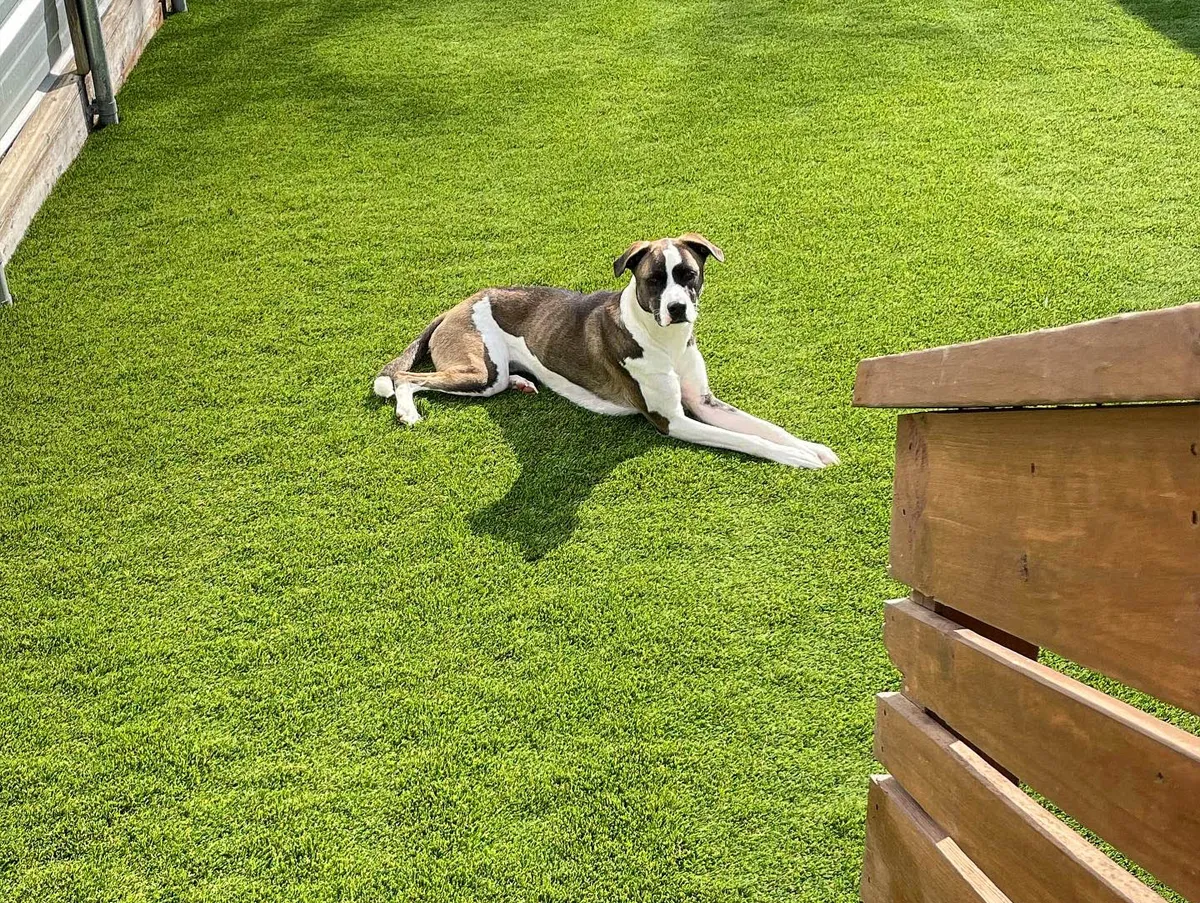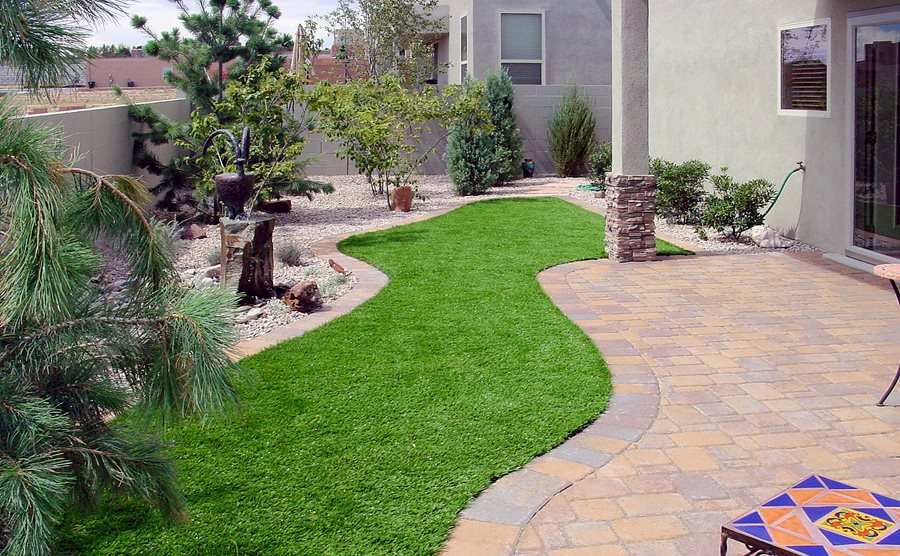Dependable Artificial Turf Companies Phoenix for a Attractive and Evergreen Lawn
Dependable Artificial Turf Companies Phoenix for a Attractive and Evergreen Lawn
Blog Article
Look Into the Environmental Conveniences of Opting for Artificial Grass Solutions
The adoption of synthetic grass services provides a compelling opportunity to attend to pressing environmental difficulties. By substantially minimizing water use and decreasing the application of harmful chemicals, these alternatives not just advertise sustainable landscape design however additionally shield neighborhood ecological communities. Additionally, the reduced carbon footprint linked with decreased upkeep activities adds to a more lasting technique to land management. The implications of these advantages prolong beyond plain conservation initiatives, elevating inquiries about their lasting impact on environment preservation and total eco-friendly equilibrium. Discovering these measurements exposes an intricate interplay worth thinking about.
Water Preservation Perks
Among one of the most considerable advantages of synthetic grass is its capability to preserve water. Conventional turf lawns require significant watering, specifically in locations susceptible to dry spell or water constraints. In comparison, artificial grass does not require watering, considerably decreasing the general need for water sources. This function is especially useful in dry areas where water shortage is a pressing problem.
By removing the requirement for normal watering, man-made lawn adds to sustainable landscape techniques and helps minimize the environmental influence of excessive water usage. The preservation of water extends to the reduction of drainage, which can lead to dirt erosion and waterway air pollution.
Furthermore, the installment of man-made lawn allows home owners and districts to allot water resources much more effectively, concentrating on vital usages such as drinking water and farming. The shift towards synthetic grass not just advertises responsible water usage but also lines up with broader environmental objectives intended at preserving natural resources.
As neighborhoods significantly focus on sustainability, the water preservation benefits of synthetic grass offer an engaging instance for its adoption in commercial and residential landscaping tasks.
Decreased Chemical Usage
The change to artificial turf significantly lowers the dependence on chemical therapies frequently used in all-natural yard upkeep. Typical grass management normally includes the application of fertilizers, pesticides, and herbicides to advertise development and control bugs. These chemicals can position threats to human health and wellness, neighborhood wildlife, and the setting, adding to soil and water contamination.
In contrast, man-made lawn eliminates the demand for these unsafe substances. By reducing the launch of synthetic substances right into the community, man-made grass promotes much healthier dirt and water systems.
Moreover, the lack of chemical drainage related to fabricated grass setups assists shield local rivers from air pollution, sustaining marine life and keeping biodiversity. Phoenix turf companies. As areas significantly focus on lasting methods, choosing for synthetic grass offers a feasible option that straightens with ecological preservation objectives. Via this change, homeowner can take pleasure in lush eco-friendly areas without jeopardizing ecological health, leading the means for a much more lasting future
Lower Carbon Footprint

Furthermore, the installment of fabricated turf can result in substantial water conservation. All-natural grass need significant quantities of water for watering, which not just contributes to the carbon footprint related to water extraction and treatment yet likewise strains regional water sources. In comparison, synthetic lawn requires very little maintenance, requiring no watering, thus dramatically lowering water use and its linked energy expenses.
In addition, the long life of synthetic grass adds to its decreased carbon impact. With a life-span of approximately 15 years or more, the demand for regular replacements is decreased, causing much less waste and lower power usage in manufacturing and throwing away standard lawn alternatives. In general, man-made turf provides a sustainable alternative for ecologically conscious landscape design.
Habitat Conservation
Environment preservation is an essential consideration in the discussion over landscape design selections, particularly when contrasting fabricated turf to natural turf. All-natural grass yards frequently require substantial maintenance, including using herbicides, fertilizers, and chemicals, which can detrimentally affect local communities. These chemicals can leach right into the dirt and rivers, harming indigenous flora and animals and disrupting neighborhood habitats.
On the other hand, synthetic grass provides a chance to decrease the ecological footprint of landscaping. By choosing for synthetic yard, homeowners can minimize the interruption of all-natural habitats associated with standard lawn treatment methods. Synthetic turf gets rid of the need for unsafe chemicals, therefore shielding nearby wild animals and preserving the honesty of bordering communities. The installment of fabricated grass can i loved this lead to the conversion of previous turf areas right into even more biodiverse landscapes, such as pollinator yards or indigenous plant areas, which can support local wild animals.
Ultimately, the shift to synthetic grass not just preserves water and reduces maintenance initiatives however likewise fosters a much more harmonious connection in between human tasks and the native environment, promoting environment preservation in the process.
Long-Term Sustainability
Long-lasting sustainability is a critical factor in assessing the benefits of synthetic grass over typical turf yards. One go to this web-site of the most considerable benefits of synthetic grass is its longevity; it can last as much as 15-20 years with very little maintenance, whereas all-natural turf calls for regular reseeding and replacement. This long life minimizes the requirement for constant resources, such as water, fertilizers, and pesticides, which are crucial for keeping a healthy grass lawn.
In addition, synthetic grass adds to a decrease in carbon exhausts connected with grass care equipment. Traditional lawns typically require gas-powered mowers, leaners, and blowers, all of which add to air pollution. Turf installation phoenix az. In contrast, synthetic grass removes the demand for such devices, advertising a cleaner setting
Furthermore, the production of synthetic grass significantly makes use of recycled products, enhancing its sustainability account. As manufacturers take on green methods, the environmental footprint of synthetic grass continues to diminish.

Final Thought
The fostering of artificial grass services presents considerable ecological benefits, consisting of significant water conservation, reduced dependence on damaging chemicals, and a lower carbon footprint. Synthetic lawn help in maintaining natural habitats by reducing land disruption and advertising long-term sustainability through the usage of resilient products. Collectively, these variables underscore the possibility of man-made lawn to add favorably to ecological health and wellness and use a practical choice to conventional landscape design methods in a significantly resource-conscious globe.
In contrast, synthetic grass does not require watering, substantially decreasing the total demand for water sources. By reducing the launch of synthetic substances right into the ecosystem, synthetic lawn promotes healthier dirt and water systems.
Additionally, the installment of artificial lawn can result in considerable water conservation. In comparison, man-made lawn needs minimal upkeep, requiring no watering, thereby substantially lowering water usage and its connected energy costs.

Report this page